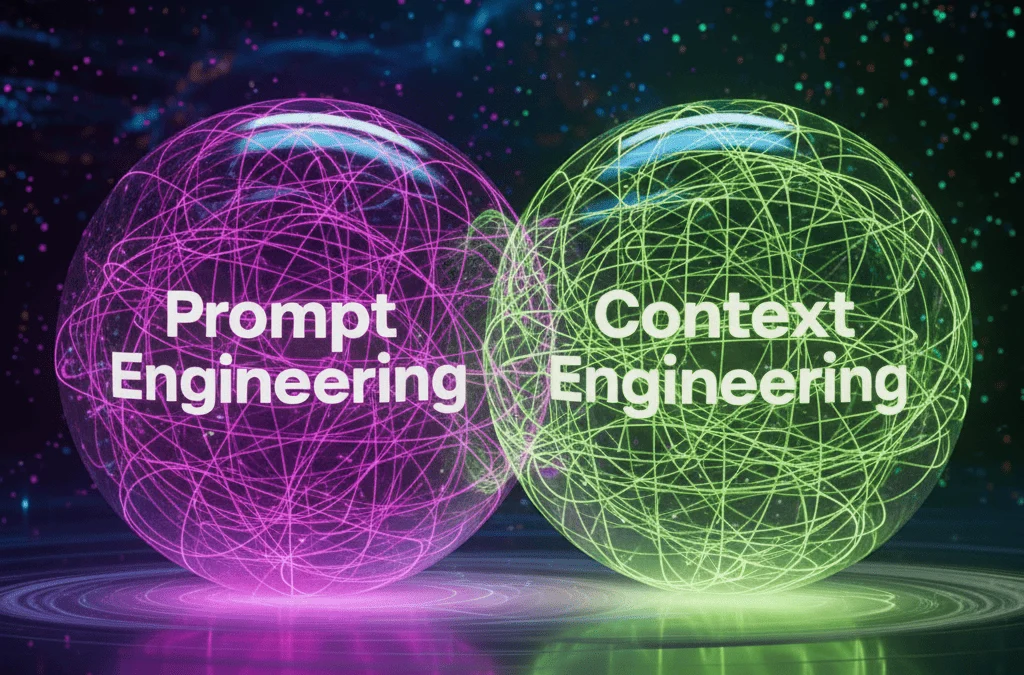How Prompt Engineering differs from Context Engineering?
Context Engineering (CE) is a systematic discipline emerging in the field of generative artificial intelligence that focuses on designing the entire information ecosystem in which Large Language Models (LLMs) operate.
It represents a fundamental shift from Prompt Engineering (PE), shifting the focus from refining a single instruction (the prompt) to building a robust, scalable, and persistent information environment.
The primary goal of Context Engineering is no longer to tell the model what to say, but to ensure what the model knows when it generates a response.
How do responsibilities change when moving from Prompt Engineering to Context Engineering
Stefano Somenzi, CTO of Athics, delivered a keynote address at the Master’s in Artificial Intelligence and Ethics at the Pontifical Antonianum University in Rome. The keynote address focused on the transformation of ethical responsibility in the Large Language Models (LLM) ecosystem, marking the crucial shift from a focus on single input (Prompt Engineering – PE) to long-term system design (Context Engineering – CE).
The keynote’s thesis is that this transition shifts the focus of ethical responsibility from the User to the System Designer, albeit constrained by the Provider of the Fundamental Model.
The Responsibility Triangle: Who Does What?
The intervention structured the ethical debate around the “Triangle of Responsibility”, identifying three key actors with distinct duties:
| Actor | Description | Main Duty | Ethical focus in the model |
| Model Provider | Creators of the base model (e.g. OpenAI, Google, Meta). | Transparency | It’s about the initial alignment and ethical DNA of the model. |
| Designer | Companies that integrate the LLM into a specific solution (e.g., corporate chatbot). | Diligence | It concerns the persistent and structural behavior of the system. |
| User | AI application user | Awareness. | Focused on immediate input and feedback. |
Prompt Engineering vs Context Engineering
Between the two AI management approaches:
Prompt Engineering (PE): This is the momentary and transient interaction. The (immediate) responsibility falls primarily on the User. The Provider and Designer intervene only with defensive filters.
Context Engineering (CE): This is the persistent architecture of behavior. The responsibility is structural and falls heavily on the Designer. The CE manages the integrity of RAG (Retrieval-Augmented Generation) data and enforces ethical and intellectual non-neutrality.
| Comparison Criterion | Prompt Engineering (PE) | Context Engineering (CE) |
| Temporal Focus | Immediate and transitory | Persistente e a lungo termine |
| Ethical Complexity | Medium/Low (more superficial problem) | High (deep-seated problem, e.g., structural bias) |
| Primary Responsibility | User (Input) | Designer (Architecture) |
Ethical and philosophical insights

Beyond the technical aspects, the presentation enriched the discussion with philosophical insights, making the ethics of AI more accessible. Recalling Seneca’s thinking, the speaker emphasized that artificial intelligence is, in itself, a “neutral” tool. This means that the true heart of the ethical question lies not so much in the technology itself, but rather in the human intention that guides and designs it. The most important ethical task, therefore, is not to make the tool “perfect,” but to ensure that those who create it act diligently and responsibly. This translates into the need for well-executed Context Engineering, capable of guiding AI to provide answers that are not only correct but also ethically grounded, countering the superficial information of the Internet and promoting transparency regarding its purposes, while keeping technical details confidential for security reasons.
Conclusions: How Prompt Engineering differs from Context Engineering
The presentation concluded that Context Engineering represents a strategic move for Designers to actively apply design goodwill, providing Users with greater information options and cognitive freedom against the “Tyranny of the Digital Mass”.

